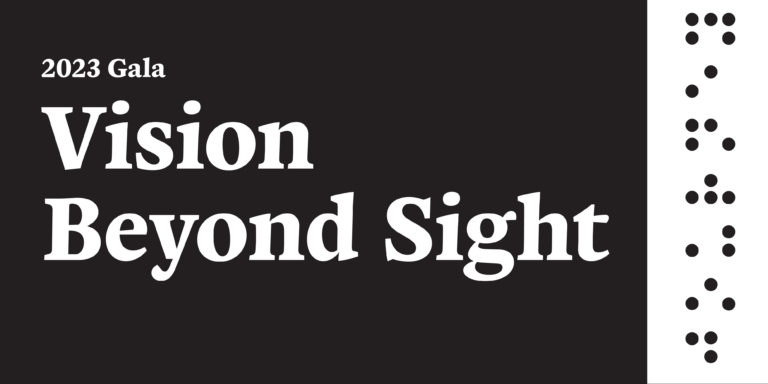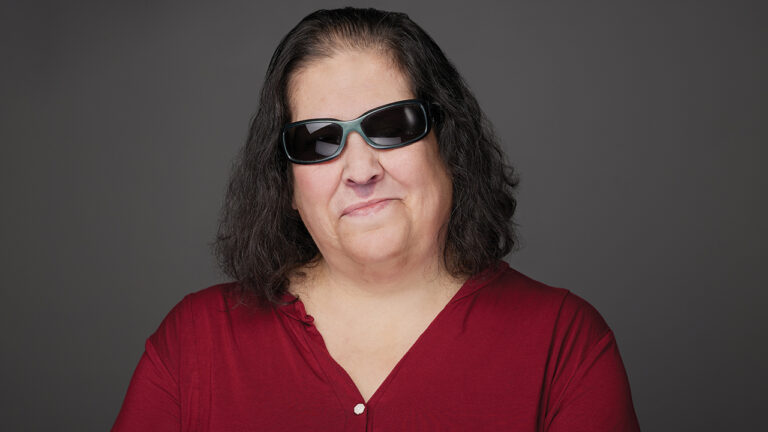Each year a majority of people make a resolution to get physically fit and stay active. There are traditional methods to achieve this, such as going to the local gym, attending an aerobic or yoga class or participating in a sporting activity. These are all great ways to keep moving but sometimes those options are not feasible or accessible to people with a visual impairment. Outlook’s Enrichment Recreational Programs are put together with the understanding that participating in physical activities for the blind or sports requires only a simple adaptation of equipment or instruction. Active visually impaired people often see an increase in self-confidence, social life, life skills and have a sense of belonging. Skiing, goalball and bowling are three popular activities for the blind available during these cold winter months.
Skiing
Skiing is a great physical activity and the ultimate winter sport. Whether you’re a beginner or an advanced skier, you will find enjoyment after each run. Adaptive skiing matches the blind or visually impaired skier with a sighted experienced ski guide. As they ski together, the guide gives directions and shares changes in surroundings and the terrain. Both guide and skier wear a vest that identifies them to prevent other skiers from skiing in between them. Many people enjoy either cross-country or downhill skiing. The major difference between the two is that cross-country skiing occurs on smaller slopes and hills, while downhill skiing involves steeper slopes. If you are interested in skiing with others who are visually impaired, connect with organizations such as American Blind Skiing Foundation or Ski for Light.
Goalball
Goalball is the most popular team sport for the blind and visually impaired. The sport originated in 1946 when Austrian, Hanz Lorrenzen, and German, Sett Reindle, developed the game as a way to keep blinded WWII veterans physically active. Goalball has since become the premier team sport for blind athletes and is played competitively in 112 countries.
In goalball, two teams of three players each face each other across a court. The object of the game is to roll a basketball size ball with bells inside over the opponent’s goal line. The opposite team listens for the oncoming ball and attempts to block it with their bodies. Once they stop the ball and take control, they become the offensive team. It is played on a court with tactile markings so that players can determine their location on the court and which direction they are facing. Players take turns throwing the ball at each other’s goal.
Goalball is typically played by people who have a visual impairment, but all players are required to wear eye masks so the experience is equal. The ball makes noise when it’s in motion so that the players can locate it audibly. This sport requires the audience to be silent while watching. If you are competitive and ready to get into the game, our recreational goalball league starts Feb. 29.
Bowling
Bowling is a fun activity that people who are blind and visually impaired can enjoy with their sighted friends and family. There are no rule modifications and visually impaired bowlers are allowed a visual description of the ball’s path, pins knocked down or pins remaining. There are two adaptive ways to play: either with sighted guide assistance or with a guide rail. When using the sighted guidance method, a sighted person aligns the blind bowler on the approach before the delivery. For the more independent bowler, guide rails help with both the approach and delivery. These lightweight tubular metal rails are easy to assemble, disassemble, and store easily. Some alleys or bowling centers have guide rails already in place or available for loan. Sign up for our Feb. 15 Bowling Bash to get into the game and have some fun with your peers.
Playing adaptive sports makes staying physically fit fun and enjoyable. Adding some basic modifications opens the opportunity of full participation and engagement in sports. Whether you are a seasoned athlete or just a novice, the goal is to get physical exercise and stay energized during these cold winter months with activities for the blind. Stay tuned for an additional post on adaptive sports for this upcoming spring and summer season.



